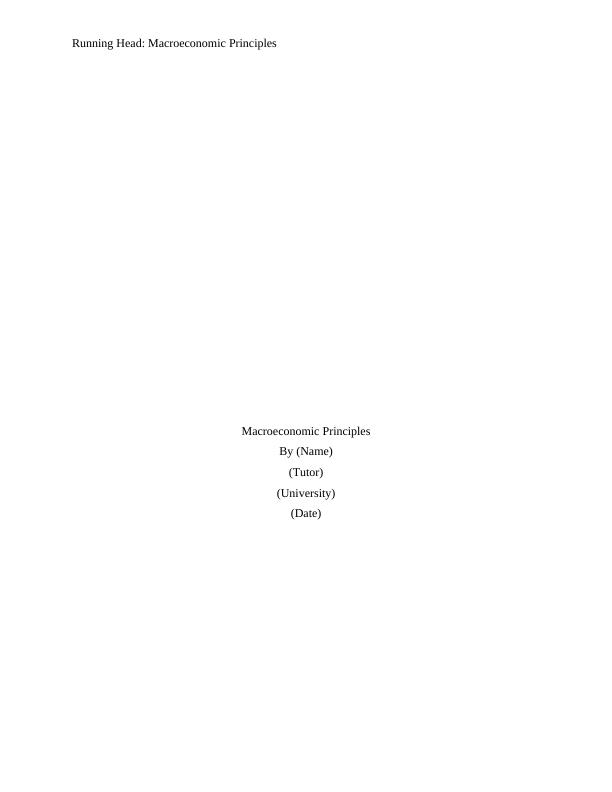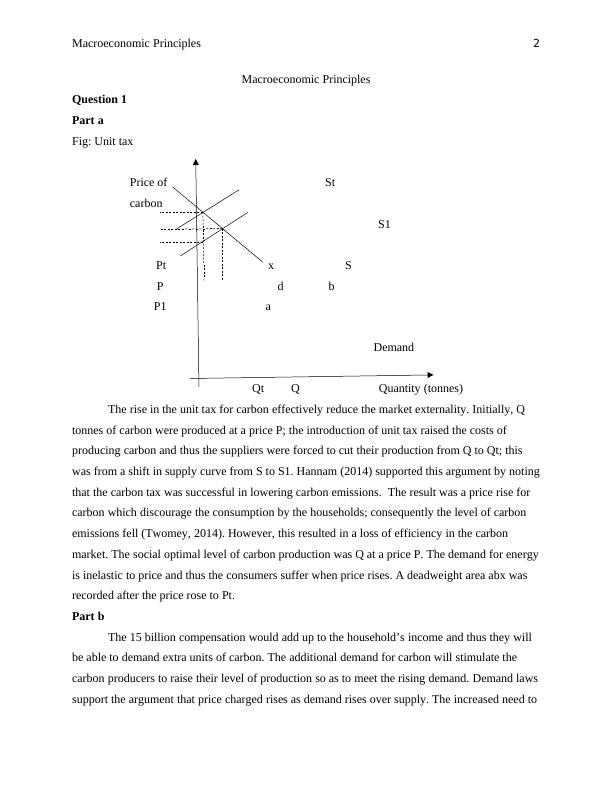Macroeconomic Principles 6 Running Head
7 Pages1601 Words361 Views
Added on 2020-03-16
About This Document
Initially, Q tonnes of carbon were produced at a price P; the introduction of unit tax raised the costs of producing carbon and thus the suppliers were forced to cut their production from Q to Qt; this was from a shift in supply curve from S to S1. Graph: The Keynesian cross model AD = Y m AD* = C + I + G + (X – M) AD = C + I + G + (X – M) n 45o YY* Real GDP The
Macroeconomic Principles 6 Running Head
Added on 2020-03-16
ShareRelated Documents
End of preview
Want to access all the pages? Upload your documents or become a member.
HI5003 - Economic Principles - Assignment
|7
|1457
|192
Macroeconomics: Demand-Pull and Cost-Push Inflation, Keynesian-Monetarist Controversy, Impact on AD-AS, Banks and Money Creation
|11
|1471
|471
The Impacts of Monetary Policies on the Australian Economy
|7
|1924
|465
Macroeconomic Analysis of Australia using Aggregate Expenditure Model
|13
|2403
|346
Macroeconomics
|10
|1475
|181
Macro Economics Assignment Sample
|14
|2649
|32



